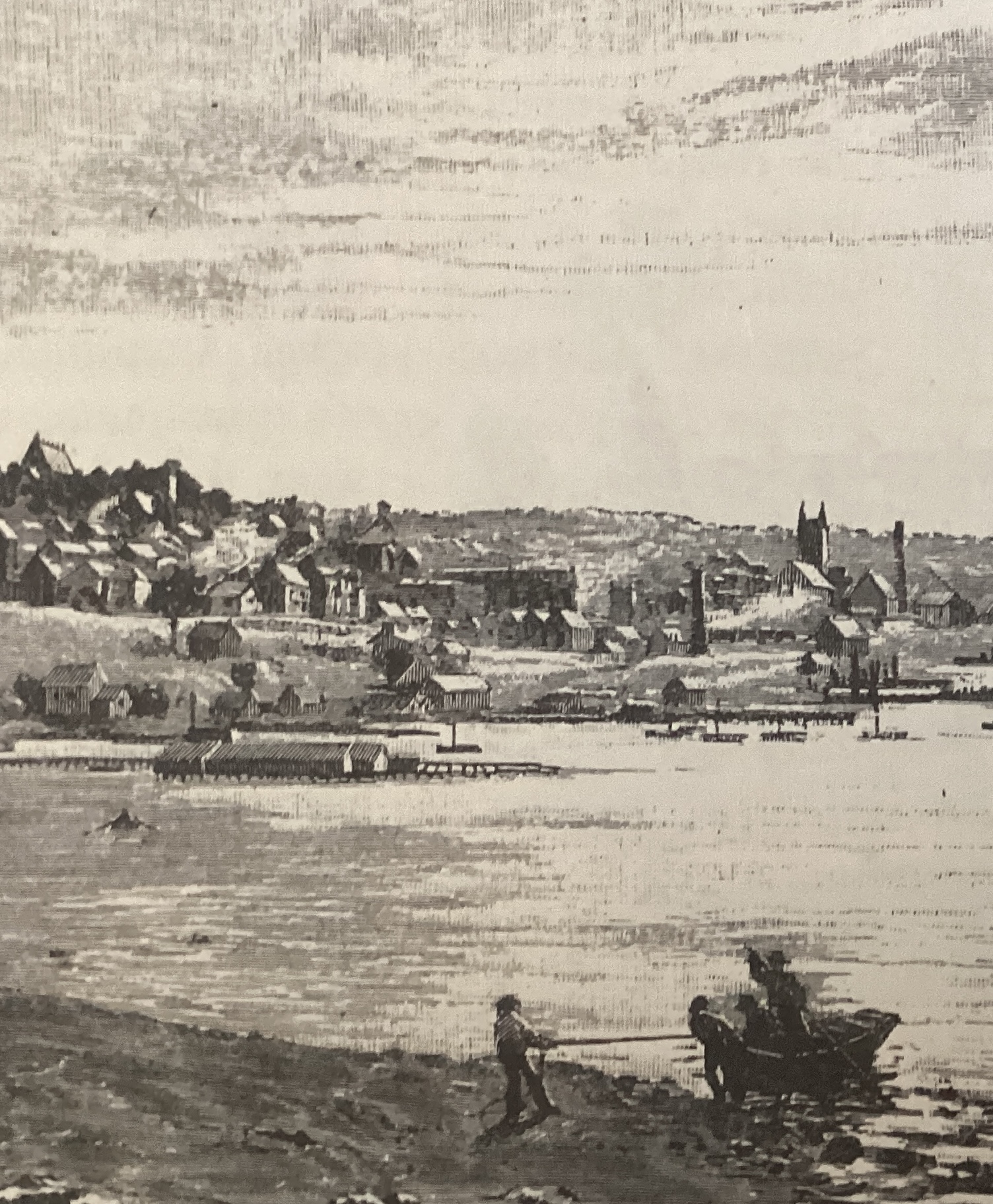
Perspective, framing, depth of field … all make for curious and attractive outcomes when applied to photography. Likewise, the golden ratio of 1.618, an odd agreement of mathematical and aesthetic sensibilities, is often attributed to pleasing artistic results.
Looking at the striking lithograph of Geelong’s waterfront within Cassell’s Picturesque Australasia, a four-volume encyclopaedia produced in 1889-90, it’s remarkable to see what a touch of artistic licence can do to an image.
The exaggerated building sizes in the middle distance and land ridge heights to the rear of the etching, entitled Geelong from the Botanical Gardens, make for an intriguing view of the old Pivot port township. It’s almost like an idyllic cliffside seaside village in Europe.
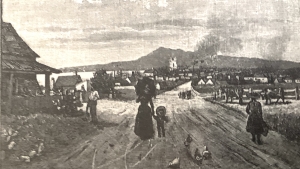
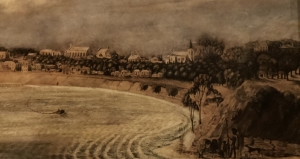
Which is perhaps somewhat explained by the accompanying text extolling the town’s “irregular-sized shops and buildings” which it says make “a picturesque show, especially as the sea is ever and anon coming into sight, as at Malta or Genoa”.
It’s picturesque, certainly, and correct again when it says: “ … the place is well supplied with churches, although it is a noticeable fact none of them have fine spires.” St Paul’s Church, on Latrobe Terrace, and St Mary’s Basilica above town on Yarra St, are both evidently remiss in this respect, although the latter does tend to the issue in later years.
Irregular-sized shops and buildings include basically everything in the image, from the small bathing houses at Eastern Beach to the outsized Mack’s Hotel, Market Square clocktower, foreshore buildings and industrial structures and chimneys near Western Beach.
About the only proportionate elements are the boats and ships along the waterfront piers. And the crew of a small craft landing at what must be roughly the site of the former Parkside Pier just beyond the minerals springs next to today’s Eastern Beach complex.
The overarching effect of the picture, however, is to portray Geelong town as much higher above the waters of Corio Bay than it truly is. And, similarly, the altitude of Newtown and Geelong West on the horizon.
In toto, it’s a kind of very pretty, worm’s-eye view with the foreground diminished in size, the middle exaggerated and mischievously compacted forward, and the outlying distant parts of town overly elevated and also brought forward. It’s distorted like something a funhouse mirror might do to you.
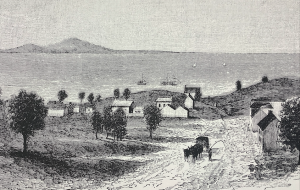
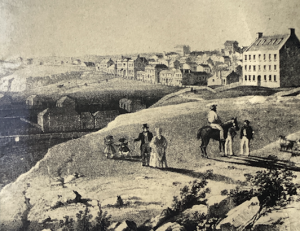
Cassell features other curious images of Geelong, one notably contrary with a parasol-carrying woman and child approaching town with the You Yangs, St Paul’s and Corio Bay behind her reversed east-west and the hills inordinately nearby.
Not the only etchings to present Geelong’s waterside and township aspect in embellished fashion, of course.
A quaint etching of a drover urging his bullocks uphill in 1842 has a well-zoomed aspect to the town’s hilly terrain. Colonial artist Wilbraham Liardet’s 1848 painting of Geelong and Corio Bay is about as out of whack as you can get with its size and perspective.
One of the most detailed images, however, dates to the 1850s and shows an unrecognisable foreshore with densely packed multi-storeyed buildings perched above several precipitous clifftops along what’s today’s Brougham Street.
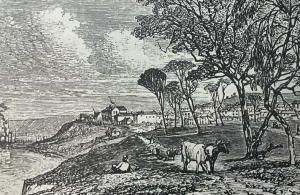
Its perspective is more in line with traditional vanishing points and the steadily diminishing scope of the receding streetscape. Likewise, a similar vintage etching with a cattle-led train of sheep on a Western Beach clifftop path beneath some scraggy trees with the fledgling Geelong in the rear.
They’re not quite golden ratio stuff, or Fibonacci sequence mathematics, but they do possess a serious aesthetic and historic sensibility, and that’s not exaggerating.
This article appeared in the Geelong Advertiser 6 November 2023.


